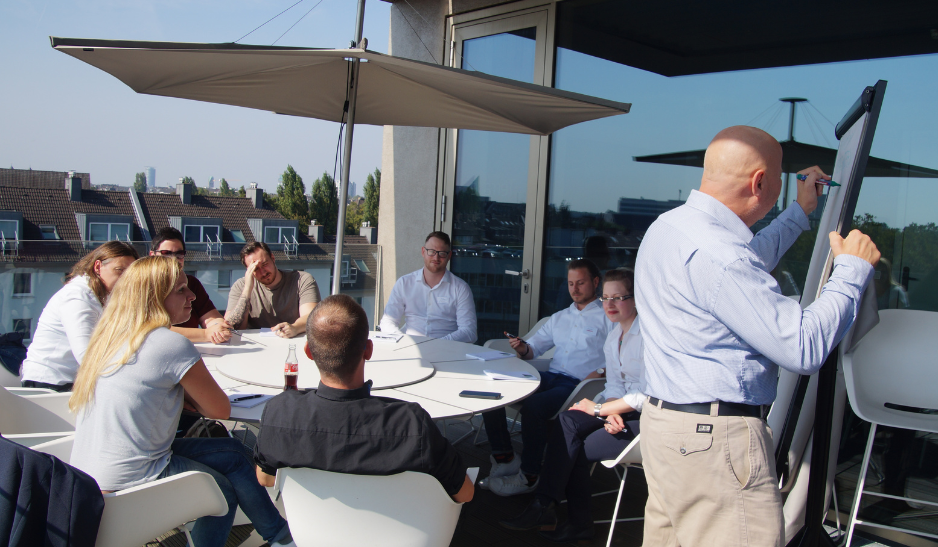Many companies view the purchase of fire safety and security systems as a necessary evil. Legally and practically, they have to have them. This is by and large because fire and security systems focus on intangibles. Their achievements are mostly invisible, their success measured by the absence of incidents. Research shows that buyers have difficulty seeing the value that fire and security solutions bring to their company and providers have difficulty communicating it.
An Unwillingness to Spend
Fire and security providers face an industry-wide problem. Buyers not appreciating the value of fire and security solutions means that they don’t want to spend too much on them. And in order to meet buyers’ unwillingness to spend, providers have resorted to competing on price, leading to solutions becoming commoditised and the industry’s profitability to plummet.
Further undermining the value and importance of security and fire protection are the tendencies of some providers to make their solutions more aesthetically attractive, e.g. ‘chrome-style’ fire extinguishers, instead of red, to match the décor. Then there are other providers who, because of the commoditisation of their fire and security solutions, have branched out into other areas to expand their business, e.g. supplying receptionists and other non-security-related staff. Some facilities management companies now offer fire and security solutions as a bundle alongside more exciting and tangible services such as catering, gardening and cleaning, satisfying buyers’ desires to keep expenditure low.
The Dangers of 'Bundling'
The problem with bundling is that buyers end up focusing on the savings that can be made rather than the business-critical nature of security and fire protection.
For buyers, an overemphasis on savings and price rather than quality can have dangerous consequences. It means they’ll tend to opt for a cheaper, lower-quality solution. If all goes well, they might make some savings from the purchase, but when an incident occurs, that’s when the cheaper options will unveil their inadequacies. A solution that is unable to deal with incidents as effectively or efficiently as a higher-priced one can lead to additional time, money and manpower being required to rectify the situation.
Ineffective handling of incidents can also lead to personal injuries resulting in litigation, leading to further costs. And these are costs that easily exceed any of the savings made from buying a cheaper solution.
The Illusion of "Low-cost"
Even if there are no incidents, low-price solutions are likely to require more maintenance and need to be replaced sooner. The initial outlay might be lower and friendlier to budgets, but the costs over time rack up. In the end, the maintenance costs coupled with the added capital expenditure when the solution fails early (not to mention the hassle of implementing a new one) make the cheaper solution more expensive.
It is only when incidents and early failures happen that buyers understand the real price of deploying a lower-quality solution. This is why providers need to make it clear to customers why quality is key, and what the real value of a high-quality fire and security system actually is.
4 Action Points for Fire and Security Providers
Some successful fire and security companies have already moved away from participating in price-based tenders and are focusing on different ways of communicating the value of their solutions. These actions include the following:
1. Working closely with end users
Many end users are unable to fully articulate their fire and security needs and do not know exactly what solutions they want. That makes it the duty of the provider to work with them to crystallise their needs. In the past, fire and security providers have tended to view innovation as more important than collaboration with end users. However, research shows that end users attach more value to collaboration. Providers who make an effort to understand their customers’ needs and work closely with them to find a solution are the ones most likely to thrive.
2. Bridging the knowledge gaps between them and end users
Providers need to ensure that their sales staff are able to clearly and comprehensively explain the difference between their products and cheaper imitations. This includes their durability and longevity and, more importantly, the things their products can do that the cheaper ones can’t. For example, high-end CCTV systems will have met various suites of high standards so that their images offer better/more information and are more likely to be admissible in court.
Providers should also highlight the utilisation rates of higher-quality systems. Generally, they are better utilised because they are well designed, well thought through and more capable of fulfilling company-specific needs. Cheaper alternatives can be poorly designed or not totally fit for purpose, hence extra resources are required to bolster them.
3. Encouraging end users to focus on the wider benefits of a high-quality fire and security solution
Higher-quality solutions are often capable of collecting huge amounts of data. Incident and management reports and analytics provide essential information for improving other areas of the business such as marketing, advertising and product placement.
Providers should also communicate the intangible results or “security dividends” of their products. For example, a company with a high-quality fire and security system will be viewed as more reliable and resilient in the face of unforeseen events, hence a more attractive company to deal with. In addition, companies can demonstrate that they are good corporate citizens by handling fire and security issues more effectively, thereby reducing pressure on police and fire services. And a company’s employee retention rate is likely to increase too, because people want to be assured that the environment they’re working in is safe and secure. Better retention means better continuity for customers.
4. Bringing together people, technology and processes
As business operations become more and more complex, fire and security needs cannot be met simply by the implementation of a few disparate technologies. Technologies by themselves are often insufficient. In many cases they are only effective when combined with the right personnel and a set of well-designed procedures for handling incidents effectively. Conditions need to be put in place to ensure that people, technology and processes are aligned. Only then can a new solution truly fulfil the needs of the end user.
Conclusion
The economic, social and political climate are such that the fire and security market is booming and will continue to do so in the near future. To thrive, providers should focus not on how low they can set their prices but on what they can really do for their customers.
They need to communicate the value of a high-priced solution in terms of its effectiveness, reliability, longevity, high utilisation rates, benefits for other business functions, “security dividends”, and the more collaborative relationship between provider and end user.
They also need to emphasise the true cost of a cheaper alternative. Not just of maintenance, early replacement and low utilisation but of the crippling costs that rack up when incidents occur and it fails to deal with them effectively.





